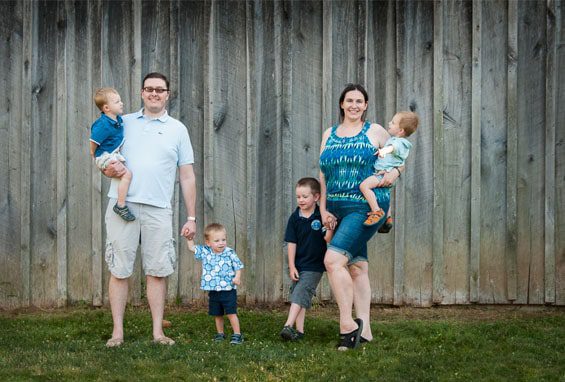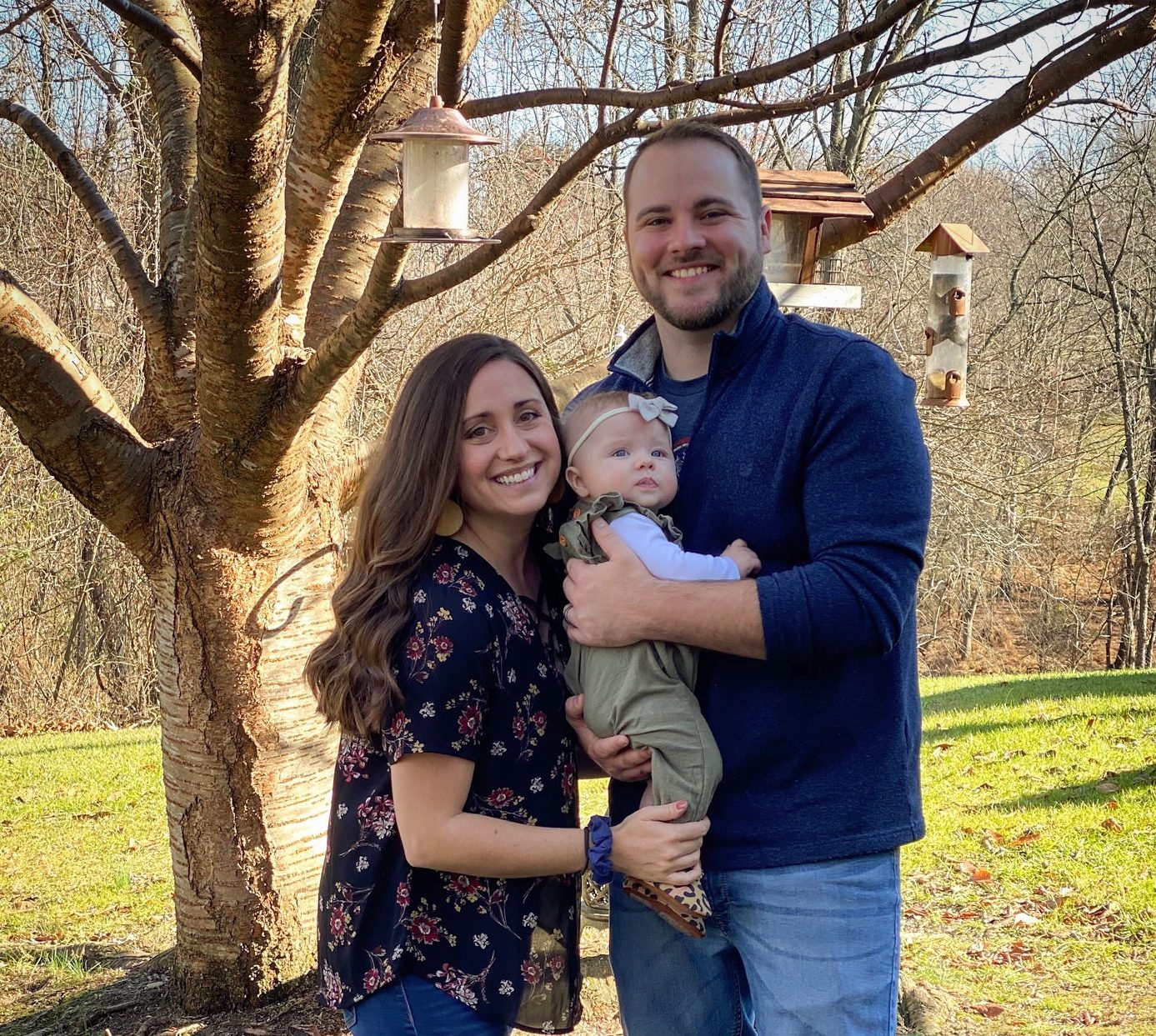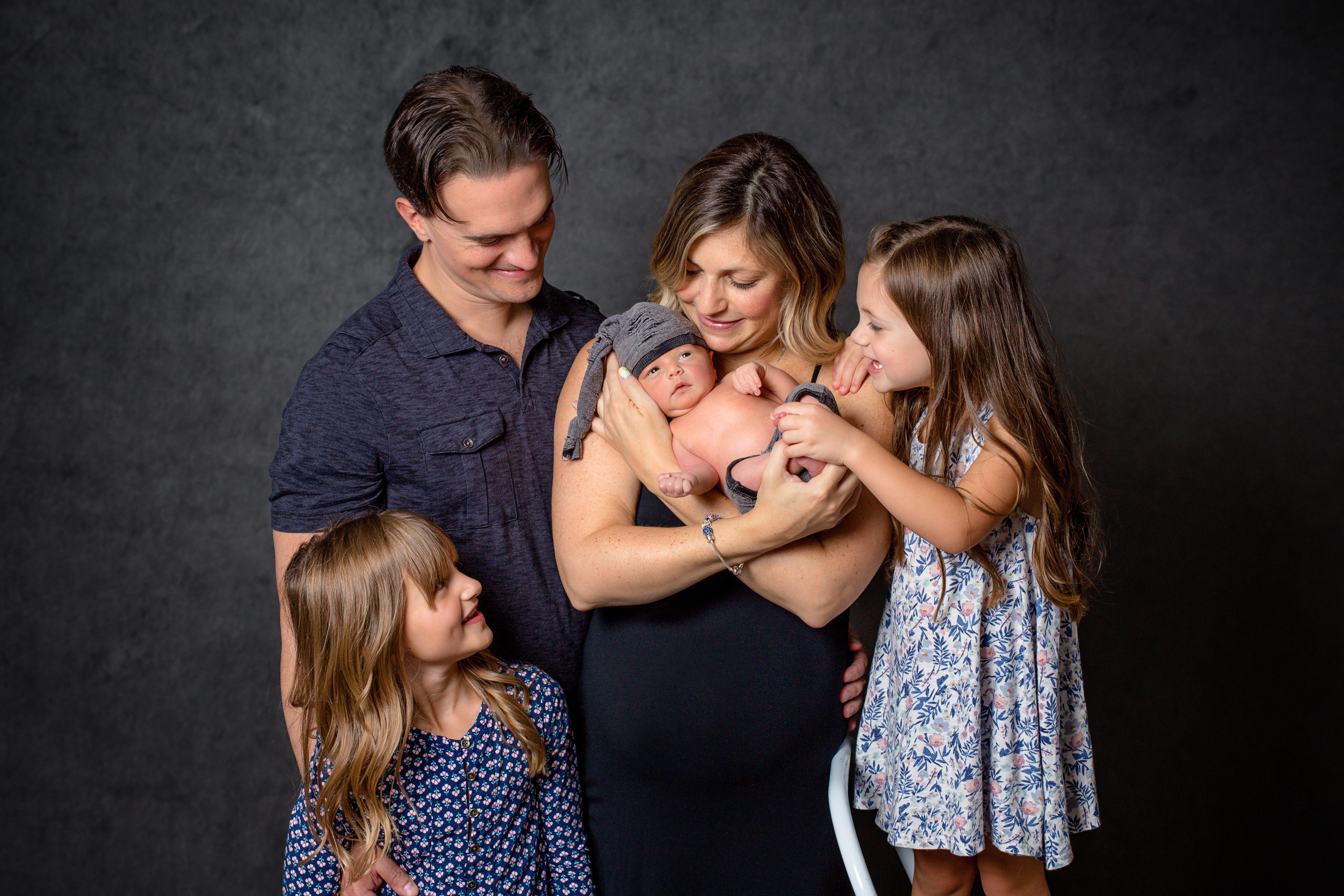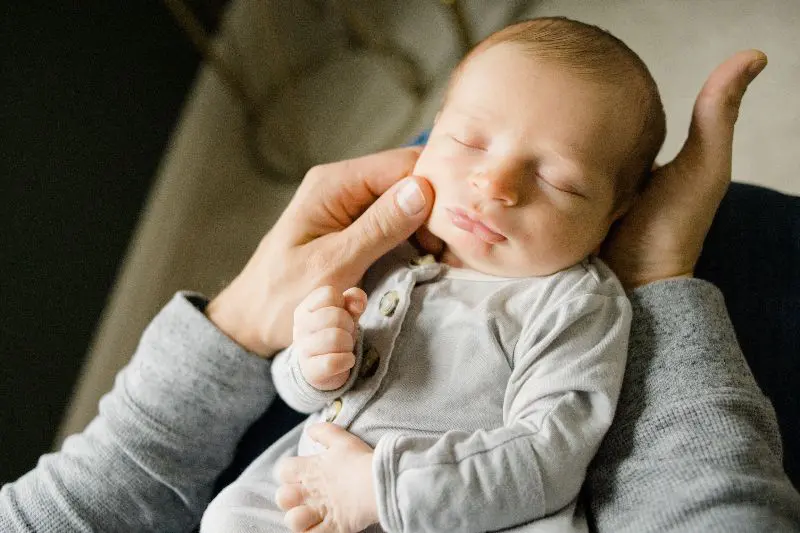Home / Patient Story / Kat & Mike

Patient Story
Kat & Mike
Recurrent Pregnancy Loss
Naveed Khan, M.D.
Leesburg, Virginia
Virginia
Frozen Embryo Transfer (FET)
In Vitro Fertilization (IVF)
My husband and I met in 2004, and although we were young (22 and 24) we knew we had something going on. We had moved in together after about six months of dating, and when I found out a year later that my hormonal birth control was causing me to develop chemically-induced lupus, we felt reasonably confident in our relationship to continue without a reliable birth control when all the other easily accessible options had failed.
We had talked about having children before and we both knew we wanted to have them. Although it wasn’t the best time since I was still in college, we wouldn’t have minded if it were to happen.
Luckily (at that time) it wasn’t happening. My cycles had developed interesting symptoms though that were very similar to those of pregnancy; but my period always came, sooner or later. At first, I attributed that change to the recent use of hormonal birth control, but eventually, I got curious and started buying pregnancy tests.
And month after month I was seeing them turn just positive enough to be noticeable and then back to negatives right when my period came, but my doctor was dismissive because I was never able to get into the office in time to have a positive blood test. We got married in 2006 and started actively trying to conceive very soon after that – with yet more positive tests as a result – but with a period that still came every month.
Getting a second opinion
At a friend’s recommendation, I switched doctors since it was getting fairly obvious there was a problem that my doctor wasn’t going to help to solve. My new gynecologist was a godsend. She listened to me and immediately ordered the recurrent miscarriage blood work which showed that I had two blood clotting disorders, Factor V Leiden and MTHFR.
A lot of people think of blood clotting disorders as bleeding too much, but in reality, it is much more common for people to have the opposite problem – they clot too much. An estimated one-third of the population has a blood clotting problem, and it frequently goes undiagnosed since not everyone will ever develop symptoms or have problems with it. It is also associated with a higher rate of miscarriage and stillbirth, and in rare cases, you see exactly what I was experiencing – recurrent early pregnancy loss.
I was sent to multiple specialists who agreed I would need to do daily Lovenox (blood thinner) injections during my pregnancy if I was going to carry to term. We realized the standard treatment of starting the injections after a positive pregnancy test wouldn’t work for me since I would have miscarried before it would start working. Understandably, my doctors did not want me on a long-term treatment that had not been proven to work, and after looking into adoption briefly, we went to a reproductive endocrinologist.
Seeing a reproductive endocrinologist
Our first choice was an RE specializing in recurrent loss. However, we were not the sort of patient she was accustomed to working with because our losses had been too early on. After hearing her repeatedly say that she didn’t understand why I was upset about my miscarriages because it’s not like they were “real babies,” I left her office in tears.
Her recommendation was to continue trying on our own because I was too emotional to go through a medicated cycle. After that fiasco, my OB recommended Dr. Naveed Khan with Shady Grove Fertility. The first visit there was off to a great start, with even my husband commenting on how much more at ease he felt with him. Dr. Khan, however, noted that my husband’s sperm report was showing one of the markers being a bit low and recommended to have it repeated before anything else happened.
We knew we were pregnant before, so we were not worried, but my husband did as he was told and we fully expected to be moving to IUI when we went for our follow-up meeting.
The bigger our shock was then when we were told my husband’s numbers, for lack of a better word, tanked in the meantime. Where he was considered normal only a few short months before, he was now facing the words “severe male factor.” Just like that, Intrauterine Insemination (IUI) was off the table and Dr. Khan recommended we move to In Vitro Fertilization (IVF) with ICSI immediately, but not before sending my husband off for more testing to make sure a drop like this wasn’t indicative of a more serious health problem.
Later we found out that he had a varicocele developing. We found it so early that it wasn’t detectable by any of the normal means.
Starting fertility treatment
It’s sufficient to say that we were in shock. We were not expecting to be doing IVF and it seemed awfully invasive, especially for someone like me who has a problem with a simple blood draw. As a result, we begged for one round of IUI, which Dr. Khan agreed to since it wouldn’t hurt anything. We treated ourselves to brunch after our appointment and we talked. And while still at the restaurant, we called our nurse to switch us back to an IVF cycle.
My first IVF cycle went well. I had a decent number of follicles (which indicated a good chance of having a good number of eggs retrieved) that were responding well, and after being a little over-suppressed initially, my hormone numbers stayed low but within normal limits. The retrieval took place three days before my birthday and we were looking at 17 eggs and reasonable fertilization rates.
Two days after my birthday, we transferred a perfect-looking embryo and had six more to freeze. I started my blood thinning meds the day of retrieval and was over the moon to see my first positive blood test and later a perfect heartbeat.
Our first baby boy arrived in 2009 after two long years of heartbreak.
Baby # 2
We knew we would have to go back to Shady Grove Fertility to get our son a sibling, which we did when he turned eighteen months old. Our first frozen embryo transfer (FET) (of two embryos) resulted in a blighted ovum, a pregnancy that develops even though the embryo had died much earlier on.
Our second transfer, which had used up all remaining embryos (two didn’t survive the thaw) resulted in an early miscarriage once again. I was using blood thinners for both of these cycles, but at a slightly lower dose than for our successful IVF cycle. When we decided to go for another full IVF cycle, I had requested for my dose to be upped again.
There were no surprises with the second cycle; my body was reacting the same way it did some three years earlier and we had thirteen great-looking eggs on retrieval. But when the time came for transfer, neither of our embryos were good enough to be transferred on its own and Dr. Khan recommended transferring two this time around.
I was crushed. Looking at the embryo ratings, I knew our chances of getting pregnant were much lower than during our first cycle. But not quite three days later I started feeling so sick; I knew the cycle had worked. All my symptoms were more pronounced for this pregnancy, but my anxiety was off the charts. The day before our ultrasound I scared myself out of my mind reading about twin pregnancies and deliveries, and having just been through two miscarriages, I was more than just a little worried about not finding a heartbeat.
However, as soon as the ultrasound started we knew we were not going to have one baby. One of our embryos split and we were expecting identical twins and a fraternal triplet to boot.
Our Life Now
Every multiple pregnancy is difficult and mine was no exception. I spent seven weeks on hospital bed rest due to preterm labor and gave birth through a scheduled c-section a day shy of 36 weeks.
Considering that 25% of all triplet pregnancies don’t survive and the average gestation is 32-33 weeks, I was very happy with how it turned out. These days life is crazy with two-year-old triplets and an almost five-year-old. I didn’t particularly want multiples and definitely didn’t expect to have the experience of the higher-order multiple, but even though there are challenges, it couldn’t have worked out more perfectly for our family.
Granted, it would have been nice to have one girl in the batch, but there is something about having four boys run around that just makes your heart melt. And who knows, we still have four frozen ones, we might be back for that girl (or another boy) soon.
Advice to a friend
Find a support community – whether it’s online or in-person – through one of the groups at Shady Grove Fertility. Infertility is a lonely battle and it helps to talk to people who understand the feelings and the journey.
Need-to-know fertility resources and guidance
Diagnosis and treatment
We understand you may have questions about infertility and how it’s treated. Gain answers from the diagnosis and treatments shared in this story.
In vitro fertilization (IVF)
Frozen embryo transfer (FET)
Male factor infertility
Receiving care
Assemble your fertility care team close to home. Explore our different locations and physicians who will provide guidance along your journey.
Dr. Naveed Khan
Leesburg, Virginia location
Find a location near me
Related Stories
Patient Story
Angela
Patient Story
Sara & Chad
Patient Story
Jackie & Mike
Patient Story
Lauren & James
2026 Shady Grove Fertility




